
What is Animation? Definition, History & Types Explained
What is Animation: If you’ve ever been captivated by a 2D animated movie, amazed by a 3D animation movie, or impressed by a sleek animation in computer graphics, you’ve experienced the magic of animation. But what is animation, really? And why is it such an integral part of the media and animation industry today?
Animation is more than just frames in motion — it’s where imagination, storytelling, and design come alive. It can educate, entertain, market, and inspire. Whether it’s a classic cartoon, a blockbuster animated film, or a short explainer video, animation brings ideas to life in ways that static visuals never could.
In this blog, we’ll explain animation in detail, explore its types, highlight animation examples, and show you how it’s made, directed, and shared with the world. By the end, you’ll understand exactly “what do you mean by animation” and why it’s one of the most powerful creative mediums ever invented.
What is Animation?
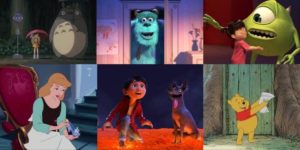
Animation is the art of creating the illusion of movement by displaying a sequence of still images (frames) in rapid succession. The human brain perceives these frames as continuous motion.
When you ask “what is animation on a computer?”, the definition expands to include motion created entirely with computer graphics. This form powers 2D animated movies, 3D animation movies, interactive media, video games, and more.
In short:
Animation is the art of transforming still images into living moments — turning ideas into stories that move.
Brief History of Animation
Animation’s history is rich and fascinating:
- Ancient Beginnings – Cave paintings showed sequential images of animals in motion.
- Pre-Film Devices – Inventions like the Zoetrope (1834) and Praxinoscope (1877) brought static drawings to life.
- Traditional Animation Era – Émile Cohl’s Fantasmagorie (1908) marked the first fully animated film.
- The Golden Age of 2D Animated Movies – Disney classics like Snow White and The Lion King set the standard.
- The 3D Animation Revolution – Pixar’s Toy Story (1995) proved the power of fully computer-generated animation.
- Modern Media and Animation – Today’s industry blends traditional animation artistry with advanced animation in computer graphics.
Types of Animation
Animation comes in several forms, each with its own style, production method, and creative potential. Let’s explore them in detail.
1. Traditional Animation
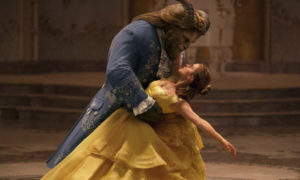
Hand-drawn animation, often referred to as traditional animation, is the earliest form of the craft. Animators draw every frame by hand, often on paper, then photograph or scan them for production.
Animation Examples:
- Snow White and the Seven Dwarfs (1937)
- Beauty and the Beast (1991)
How It’s Made:
Artists create key frames to define main movements, then draw in-between frames for smooth motion. Artists scan, color, and layer these with backgrounds.
Directing the Motion Graphics:
Directors oversee storyboards, pacing, and emotional delivery, ensuring a consistent visual style.
How It’s Published:
Traditionally released in theaters, later on VHS/DVD, and now on streaming services.
Also Read: Top 15 Famous Film Directors in India
2. 2D Digital Animation
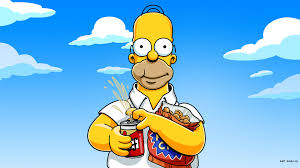
2D animation recreates traditional styles using software. It’s popular for TV shows, explainer videos, and web content.
Examples:
- The Simpsons
- Rick and Morty
How It’s Made:
Artists use software like Adobe Animate or Toon Boom Harmony to draw characters and backgrounds digitally. Tweening tools automate certain motions for efficiency.
How It’s Directed:
Directors use animatics, or rough animation drafts, to fine-tune timing and enhance both comedic and dramatic moments.
How It’s Published:
Distributed via TV, streaming services, and online platforms.
3. 3D Animation
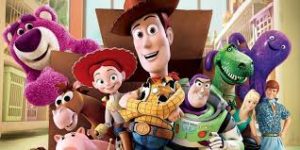
3D animation creates characters and worlds with depth and realism. It’s the dominant style for modern films, games, and VR experiences.
Animation Examples:
- Toy Story (1995)
- Frozen (2013)
How It’s Made:
Models are created in software like Blender or Maya, rigged with skeletons for movement, and animated. Lighting, textures, and rendering complete the process.
How It’s Directed:
Directors use 3D pre-visualizations to plan camera angles and movement.
How It’s Published:
Released in theaters, later on streaming services or as interactive content.
4. Stop Motion Animation
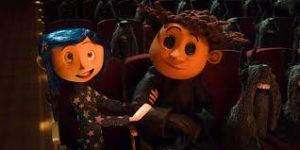
Stop motion uses physical models moved incrementally between photographed frames, producing a handcrafted aesthetic.
Examples:
- Coraline
- Wallace & Gromit
How It’s Made:
Animators meticulously position models and capture them one frame at a time.
Directing the Illustrated motion:
Directors meticulously plan movement and lighting to keep shots consistent.
How It’s Published:
Often shown in theaters, festivals, and commercials.
5. Motion Graphics
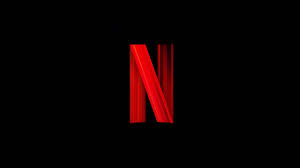
Motion graphics animate text, logos, and shapes for branding and communication.
Examples:
- Netflix intro sequence
- Animated infographics
How It’s Made:
Artists create designs in Illustrator or Photoshop, then animate them in After Effects.
Leading the Direction:
Creative directors focus on clarity, style, and timing.
How It’s Published:
Common in ads, intros, presentations, and online content.
Also Read: Top 10 Branding Agency in Noida
6. Experimental Animation
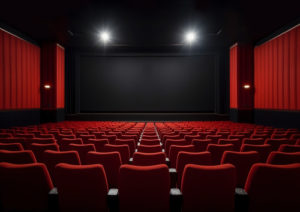
Experimental animation defies convention, exploring unique materials and unconventional methods.
Animation Examples:
- Avant-garde shorts at film festivals
Creating the Animation:
Can involve painting directly on film, sand animation, or combining live-action with animation.
How It’s Directed:
Directors emphasize artistic exploration over mainstream appeal.
Distributing the Animation:
Shown in art galleries, museums, and independent film events.
What is Animation in Computers?
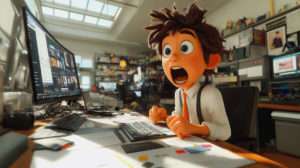
When someone asks “what is animation in a computer?”, they’re referring to creating moving visuals digitally using computer graphics. This covers 2D films, 3D animated features, and interactive digital experiences. Unlike traditional animation, where artists draw frames by hand, animators use computer software to model, rig, and animate elements. This method offers greater precision, flexibility, and speed, making it the industry standard for modern media and animation.
How Do You Make Animations?
Creating an Creative motion — whether it’s a 2D Illustrated motion movie, a 3D animation movie, or animation in computer graphics — starts with an idea.
- Concept Development – Define your story, characters, and purpose.
- Storyboarding – Sketch out the sequence of scenes.
- Design – Create characters, environments, and props.
- Animation – Add movement frame by frame or with digital tools.
- Rendering – Produce the final visuals.
- Publishing – Share it in theaters, online, or through broadcast.
Media and Animation Explained
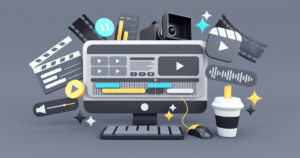
The relationship between media and Art in motion is inseparable. Illustrated motion is one of the most powerful storytelling tools in modern media, allowing creators to communicate ideas in ways that are engaging, memorable, and visually stunning. From traditional Saturday morning cartoons to high-budget 3D motion graphics movies, Virtual production shapes how audiences experience entertainment. In marketing, animated ads capture attention instantly, while in education, animated explainers simplify complex topics.
The evolution of media and Computer graphics has been driven by advances in technology, particularly computer graphics, which has expanded the possibilities for creators across TV, film, social platforms, and immersive virtual environments. Simply put, Motion graphics is the heartbeat of today’s visual media world.
Also Read: What is a Feature Film?
Types of Animation Examples:
Traditional Animation
- Snow White and the Seven Dwarfs (1937) – Disney’s first full-length 2D animated movie and a landmark in traditional Real-time motion. Every frame was hand-drawn, proving that animated films could tell rich, emotional stories that rival live-action cinema.
- Beauty and the Beast (1991) – A blend of traditional Computer-Generated Imagery with early Real-time motion in computer graphics for certain scenes, showing how hand-drawn artistry and technology could complement each other.
2D Animated Movies
- The Simpsons – An enduring example of 2D Virtual production, running for decades on television. Its style is simple but instantly recognizable, and it demonstrates how media and Digital scenes can influence culture and humor on a massive scale.
- Rick and Morty – A modern 2D animated series that uses digital tools but retains a traditional frame-by-frame feel. Its storytelling, humor, and complex narratives show how 2D Digital scenes can be sophisticated and appeal to adults.
3D Animation Movies
- Toy Story (1995) – The first feature-length 3D Character design movie, entirely created with VFX in computer graphics. It revolutionized filmmaking by showing the potential of computer-generated animation in storytelling.
- Frozen (2013) – A visually stunning 3D Character design movie that combined groundbreaking rendering technology with universal storytelling and music, setting box office records worldwide.
Stop Motion Animation
- Kubo and the Two Strings (2016) – A stop-motion adventure that combines intricate handcrafted models with cutting-edge digital effects.
- Wallace & Gromit – Charming British clay animation classics, highlighting how stop motion can create endearing, character-driven stories without the need for digital tools.
Motion Graphics
- Netflix Intro Graphics – A perfect example of how motion graphics can instantly establish brand identity. Simple moving shapes and typography create a memorable visual experience seen by millions daily.
- Animated Infographics – Used in marketing campaigns and educational media, these motion graphics take complex data and turn it into engaging, easy-to-understand visuals.
Experimental Animation
- Avant-Garde Short Films – Often showcased at film festivals, these projects push the boundaries of media and Character design. They might mix live-action footage with abstract animated elements, creating entirely new viewing experiences.
Why Animation Matters?
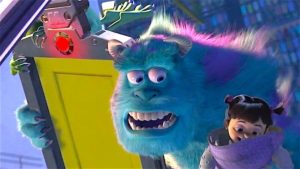
Animation is far more than just entertainment. It’s a powerful form of communication that shapes the media and Visual effects industry, influences culture, and drives technology. From traditional Cinematics to advanced Cinematics in computer graphics, it allows creators to tell stories that might be impossible with live action. It’s the heart of 2D animated movies, 3D Digital scenes movies, and countless Computer graphics examples across education, marketing, and science.
In education, Computer graphics simplifies complex concepts, making them easier to understand. Animated diagrams and animation in computer simulations are widely used in classrooms and professional training. In marketing, Media art examples like brand motion graphics and animated advertisements grab attention in crowded markets, helping companies stand out.
Also Read: Top 10 Advertising Agency in Noida
Role of Animation:

The role of animation in computer graphics in entertainment is undeniable. Iconic 3D Cinematics movies like Toy Story and Frozen have reached global audiences, proving that animated films can be as emotionally powerful as live-action cinema. Even short 2D Cinematics movies in advertising and social media campaigns have the ability to go viral, influencing trends and public opinion.
From a cultural perspective, media and Storyboarding play a vital role in shaping how we see the world. Animated characters often become cultural icons, inspiring generations. Technologically, advances in Motion pictures in computer graphics have pushed forward innovations in VR, AR, and AI-assisted production.
Ultimately, Storyboarding matters because it blends creativity with technology, imagination with execution. Whether in traditional Digital art, cutting-edge 3D Cinematics, or educational infographics, its ability to move people emotionally, explain complex ideas, and engage across cultures is why it’s a central force in the media and Digital art world.
FAQs
- What do you mean by animation?
It’s the process of creating moving visuals from still images, whether by hand or using computer software. - What are the types of animation?
Traditional, 2D digital, 3D, stop motion, motion graphics, and experimental motion graphics. - What is animation in computer graphics?
Digital creation of moving visuals using software for films, games, ads, and more. - How do you make animations?
Through concept creation, storyboarding, design, animation, rendering, and publishing. - Can you give examples of animation?
Yes — Toy Story, Frozen, Rick and Morty, Coraline, and the Netflix intro sequence.
Conclusion
Animation is where creativity meets innovation. From the careful craftsmanship of traditional Motion pictures to the limitless worlds built with Motion pictures in computer graphics, it’s a medium that continues to evolve and inspire. In the media and animation industry, it’s not just about making things move — it’s about moving people’s hearts and minds.
Also Read: What is VFX? Exploring Its Types, Techniques, and How its Made